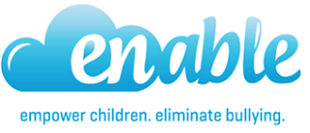ENABLE final event on bullying in the context of child’s play
 On the 21st and 22nd of September, the ENABLE (European Network Against Bullying in Learning and Leisure Environments) partnership held the final event of the European Project. COFACE Families Europe has been involved since the beginning of the project as a member of the Think Tank, bringing some of the expertise gathered from the #DeleteCyberbullying project and promoting the ENABLE deliverables via its website.
On the 21st and 22nd of September, the ENABLE (European Network Against Bullying in Learning and Leisure Environments) partnership held the final event of the European Project. COFACE Families Europe has been involved since the beginning of the project as a member of the Think Tank, bringing some of the expertise gathered from the #DeleteCyberbullying project and promoting the ENABLE deliverables via its website.
ENABLE aims to tackle bullying in a holistic way, helping young people exercise their fundamental rights in the home, school, class and community (i.e. peer group). The project aims to develop social and emotional learning (SEL) skills as a means of building resilience in young people so that they can better understand and become more responsible and effective for their on- and offline social interactions. ENABLE has been implemented in half a dozen countries across Europe, providing teachers with detailed lesson plans on SEL in a number of languages including Croatian. COFACE’s Croatian member, Korak po Korak, which is also highly active in prevention of cyberbullying, was present at the event.
The two day final event offered a mix of plenary sessions and workshops, including a brainstorming session during which participants were invited to develop a “roadmap” on key themes such as privacy and security, e-presence and communications, empathy and ethics, hate speech and extremism. Some noteworthy presentations from the conference included:
– The intervention of American expert Anne Collier who stressed the importance of a whole school approach to tackle cyberbullying and the failure of “zero tolerance” policies assorted to punitive measures such as suspension from school.
– Innovative examples of interactive games carried out by Urko Fernández from Pantallas Amigas (Spain), which consisted in a sorting exercise of social networking comments/messages drafted by psychologists. Children were encouraged to discuss whether the messages were safe or insulting and the video game setting sparked the debate and exchange in a natural way.
– A demonstration of security risks linked to the Whatsapp application which was presented by Mohamed Mustafa Saidalavi, allowing a person to send/receive messages from another person’s Whatsapp account by borrowing that person’s phone for a short moment and linking his/her account via a QR code on their own device.
COFACE, represented by Martin Schmalzried, spoke in a workshop on bullying in the context of child’s play – toys, games, social media and gaming environments.
Playing is important. Children develop a great number of social and technical skills via play. Recently, national education systems have taken an interest in new methods of learning, including the “gamification” of learning or the integration of new technologies in their teaching methods. While there are benefits to these innovative methods, one must be careful since the field of education is a lucrative market. For example, the UK based company Pearson, specialized in education, has a turnover of over £4 billion. The more “gamification” and new technologies are integrated into schools, the more money some of these companies can make. To guard against such vested interests, integrating innovative teaching methods in school should require careful consideration and be based on clear and proven added values. Besides, many of the video games cited as an example for their educational potential have been developed outside the video game industry (Minecraft, Portal…).
As regards bullying in video games, it takes many different forms such as flaming, trolling, griefing, identify theft, all of which may or may not fit the definition of bullying. Some examples include: Hacking into someone’s account and destroying their creations or stealing their virtual objects, and, in-game sabotage, such as ruining a player’s quest or “unreasonable and repeated killing” of a player, which is often referred to as “griefing”.
Bullying in video games is especially targeted towards specific groups, especially women, but also towards the LGBT and people with disabilities. New technologies such as Virtual and Augmented Reality have the potential to exacerbate some of these issues:
– Identify theft with technologies enabling realistic modelling of a person.
– Physical pain, as companies develop tools to increase the realism of VR.
– Increased trauma in case of in game extreme violence or harassment.
– Desensitisation which may contribute to lowering empathy.
Yet researchers have also found a number of benefits to VR which may, in certain simulated settings, increase empathy or help get past trauma. Monitoring developments in this field is therefore key in order to reap the benefits and minimize the risks.
For more information about the ENABLE project, visit the official website
